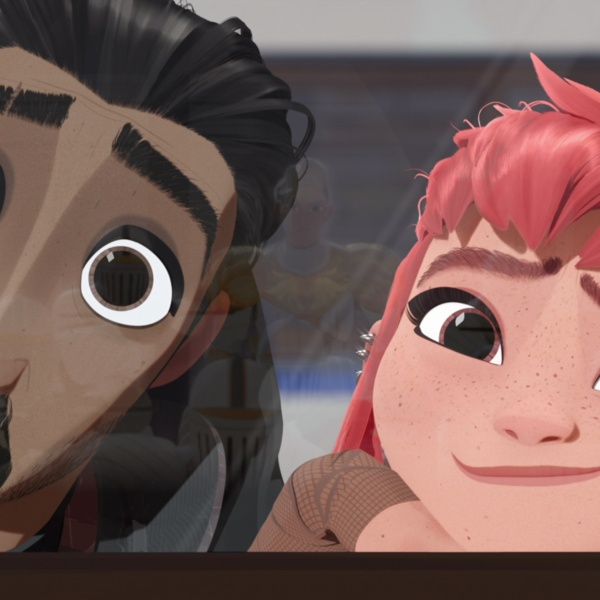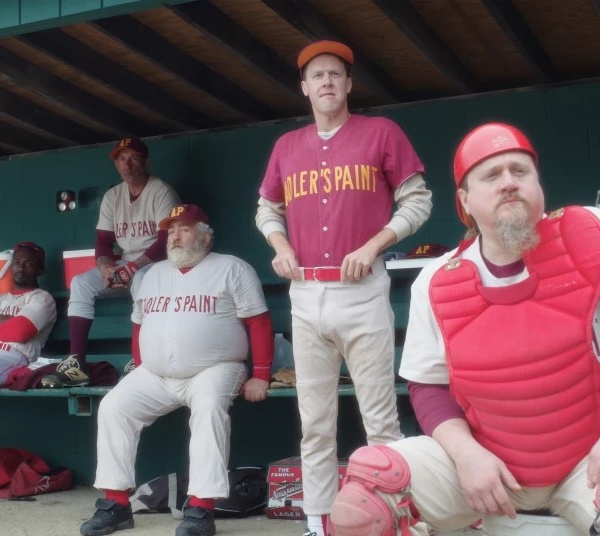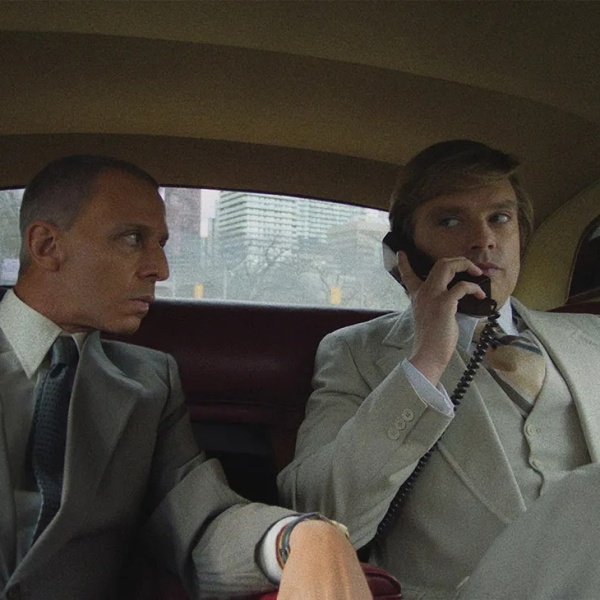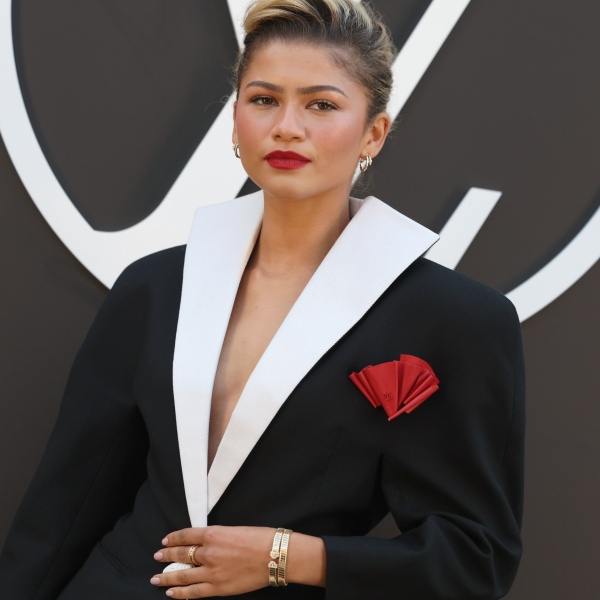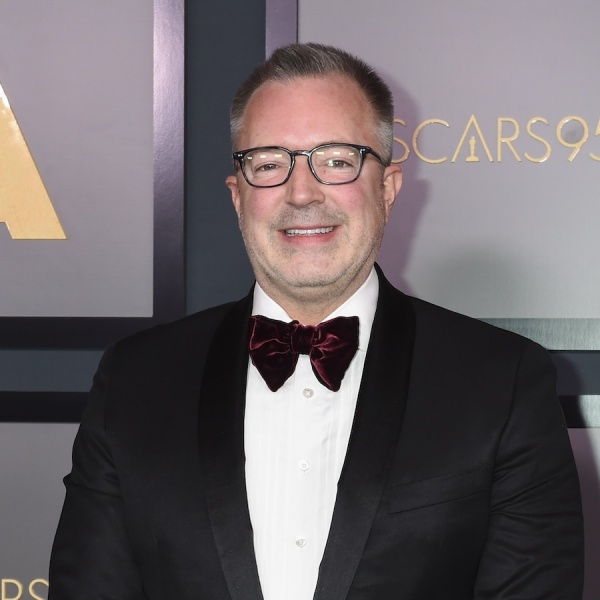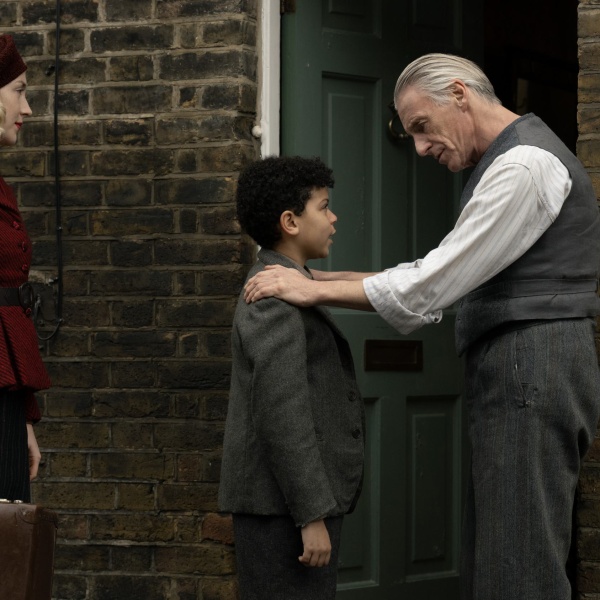Editor’s Note: This interview originally ran during the 2023 Venice Film Festival. “The Beast” opens in U.S. theaters on April 5, 2024.
Fans of David Lynch’s “Twin Peaks: The Return” and its mystical loop through hell and horror that ends with a scream, charged by Tulpas and body-swapping and timelines that swallow each other up, might find their itch for the heartsick uncanny scratched by Bertrand Bonello’s “The Beast.”
It’s the most formally daring, willing-to-alienate of any films to premiere out of the Venice Film Festival competition so far, shape-shifting from Belle Époque Paris in 1910 to a recognizable 2014 Los Angeles, and, finally, a sterile post-pandemic future somewhere in 2044. Léa Seydoux plays a woman named Gabrielle in all three periods — first, a miserably married fin-de-siècle pianist, then an aspiring actress in Los Angeles in the present day, and then a woman electing to have the leftover emotions from her past lives erased through a submersion tank of inky goo and an articulated robot arm to the brain. Her problem throughout is that she can’t accept love out of fear of the unknown.
But her constant — her “Beast” — is a pursuit adjacent to love, in the form of a man played by George MacKay. He first courts her in 1910, a section Bonello adapts faithfully from Henry James’ 1903 novella “The Beast in the Jungle,” about a man who rejects love because he thinks something horrible will happen to prevent it (it never does). Then, in 2014, MacKay plays a Santa Barbara college student named Louis Lewanski who, if you followed the news that year, you’ll recognize immediately from his Armani sunglasses, camera positioning, Range Rover, and self-tape monologues promising to slaughter all women who rejected him, as incel killer Elliot Rodger.
Rodger, who killed seven people and injured 14 in Isla Vista, California, in May 2014, was a 22-year-old angry at all the women in the world over his virginity. MacKay’s Louis is slightly older, at 30, and while Bonello doesn’t remake the character as a vicious killer, Louis is on the verge of terror, stalking women on Hollywood Boulevard in Los Angeles. Meanwhile, the 2044 version of MacKay’s character is also looking to erase his emotions to become a better, more useful worker — a process Seydoux’s Gabrielle has mixed feelings about for herself. The film plays out in a mix of French and English that became essential, according to the director, once his cast took shape.
The throughline of each period of the movie argues how we are perhaps doomed to love the same person in every iteration of our lives. As IndieWire’s David Ehrlich put it so well, French director Bonello’s films are typically “more interested in negotiating the semiotics of emotion than provoking it,” but “The Beast” turns out to be a rather touching love story as Gabrielle keeps coming up against various versions of MacKay’s character throughout her lifetime(s). She remains fixed as he changes, which doesn’t bode well for her lifelong search for a meaningful loving connection.
Think of it as “Eternal Sunshine of the Spotless Mind” for pessimists, and with an even more unpredictable structure that will alienate mainstream audiences but intrigue those seeking a challenge. “The Beast” is still on the hook for U.S. distribution, but reviews out of Venice have mostly been raves. IndieWire sat down with Bonello at the Excelsior Hotel on Lido Beach at the film festival to talk his latest movie — which Cannes rejected, by the way. We discuss how MacKay, after Bonello took the Eurostar from Paris to London to meet him, ended up replacing Gaspard Ulliel, who died while the film was in pre-production. We also touch on how Bonello cast “Red Scare Podcast” host and “Succession” star Dasha Nekrasova as a vocal-fried L.A. actress, and the film’s parodying of American studio filmmaking as the 2014 Gabrielle acts in a chaos-fueled cell-phone commercial entirely surrounded by green screen.
This interview has been edited and condensed for clarity.
IndieWire: There’s a been rumor that Cannes rejected “The Beast” for its 2023 festival. Is this true?
Bertrand Bonello: It is. The best place for a film is where the film is wanted, and now we are doing, with this film, a huge fall release, so Venice, then Toronto, New York, Busan, stuff like that, so maybe it’s what’s best for the film. [Cannes] didn’t like it.
Did the screenplay start in 1910 with the Henry James story? How did it take shape? I can’t imagine that the screenplay was written out in the order it unfolds onscreen.
Usually, I have a piece of paper, and I put notes on it with all my desires, some ideas. Not always stories, little words, stuff like that, and it has to fit on one paper. When I think I have a film on that, I start to write. On this piece of paper, there were very different things, [including] melodrama, which drove me to Henry James, because this novel is the most beautiful, heartbreaking, and awful novel about love. I remember some of the words [on the paper], mixing words, mixing genres, having a female as a main character, which is something I’ve never done. So when I had all this stuff, then I started to write. It’s a mix of many desires.
You had to recast Gaspard Ulliel’s role after he died. George MacKay has an unknowability about him, whereas Gaspard was more recognizable as an icon. Did George know French before the movie?
No. It’s crazy. When Gaspard died, we decided to still do the film. The first decision was not to replace him with a French actor; I didn’t want any comparison because it would have been impossible for me and the actor. I wanted to switch to an American or British actor, so I started to do this classical [casting process], meeting a lot of people for three or four months. The last person I met was George. I went to London. We met and did a few tests, and after two or three minutes, it was obvious he was a good person [to play the role]. It is true he didn’t speak a word of French, but I’ve been always told British actors were amazing and the hardest actors. It’s true because it’s not phonetic; he’s really acting. We gave him coaches, but he’s really acting, not repeating.
In the 2014 period of the film, I knew immediately that MacKay was playing an Elliot Rodger type because of the word-for-word recreation of his manifestos, even the clothes and the way you position George with the camera. Some people in the audience were laughing.
I was watching the film at 4:30 at the official premiere, and it was incredibly quiet, like a church, and I’m always very happy about that. But during the monologues, some people were laughing.

Maybe they don’t recognize what it is. Out of context, it’s sort of funnyseeing George MacKay in this way.
I realize, yes, the first monologue where he’s like, “Look, I’ve got my Giorgio Armani,” it can be funny, but the more you go into the monologues, and his hate of women and the day of retribution, people stop laughing.
Is there a comparison for this kind of person in France? What’s France’s relationship to this Elliot Rodger figure?
It’s very different. That’s why I set up this second part in L.A., in America. Of course, we have incels, of course, we have people killing girls, but not the same way of putting yourself in mise en scene. This is very North American for me. America, because of the relationship with guns, the way everything is fiction in a way, even reality is fiction, creates this kind of character. That’s why I set up in L.A.
Did you have any hesitation aboutbringing the image of Rodger back onscreen?
I discovered in 2014 his videos, and I was really impressed, shocked by the acts of course, but impressed by the monologues. I couldn’t write that. If I had written something like that, my writing would have been more crazy, and there is something very normal in his way of talking that is even more freaky. I kept quite close to his words because I couldn’t find a better or more freaky way to express these ideas.
This was your first time shooting in L.A. You shoot on Hollywood Boulevard, which is a seedy place, and other than David Lynch’s “Inland Empire,” I have not seen Hollywood Boulevard represented for the dark place that it is quite so vividly on screen. What was your impression of this place?
We shot in L.A. only a couple of nights. We shot with a very small crew, no authorization. Of course, when you’re a moviemaker, you arrive in L.A., you think, “I’m going to shoot in L.A.!” It’s something that makes you dream. But Hollywood Boulevard, for example, because there is so much light was easy. It’s always something to be in L.A.
How did you end up casting “Red Scare Podcast” host Dasha Nekrasova? She’s great at playing this disaffected kind of L.A. person.
Every time I do an interview with someone American, they go to Dasha. I have to tell you the truth. I was in New York in 2019 to present a film [“Zombi Child”], and she asked to meet me, so we had coffee and a drink, and we got on well, exchanged a few emails, then she came to Paris. When I was searching for an American girl for two or three scenes, I didn’t want to go through casting, and Dasha was perfect because I really like the rhythm of her voice. I wasn’t aware of her podcast. Then I told my daughter, she said, “Dasha is going to be in your film? Have you heard about the podcast?” I said, no, what is it, and she told me.
This isn’t your first time working with Léa Seydoux. How would you describe her process for this movie? What’s interesting is that George’s character changes a lot between the periods, but she’s fixed.
Exactly. It’s not something I ask. I respect the way the actors are. The way they work is very different. With George, for example, two months before the shooting, we talked a lot, a lot of emails, questions from him. He really wanted to prepare himself a lot. That’s his way of working. We did all the preparation and work before the shoot, so when he gets on the shoot, there’s not a lot to direct with him. It’s done. Léa, on the contrary — she doesn’t want to know a lot. She doesn’t ask any questions. She likes the fact that she does not always understand the heart of the scene. She’s comfortable with that, and she prefers the present time of the shooting. She has a great cinematographic intelligence, but that doesn’t go through her brain. They’re very different. It was not always easy to have two actors on set that work in a different way, but that’s my job, to adapt to the actors.
They got along together really well, and very quickly. While I was preparing shots, I was just watching them laugh all the time. I don’t even know if they were talking about the scenes or just getting on well together. I don’t think Léa needed to understand what was going on.
The movie begins with this green screen moment, where Léa’s character is doing a commercial entirely in front of a green screen. Have you experienced this kind of set? Was this meant to be a parody of American filmmaking? It doesn’t feel like a parody — that’s really what it isnowadays.
I know. A friend, a DP who shot a film shot 14 weeks on a blue screen. For me, the prologue was a way to say, OK, there is going to be something virtual in the film, not virtual in the sense of images, but virtual in a wider sense. It’s also a way to say, OK, my subject is Gabrielle, because she’s so alone on the green screen, and also say, my second subject is Léa Seydoux, because the film becomes a documentary on her. She’s shot on every side. In many scenes, especially in 2014 and 2044, she’s alone in front of screens, in this house in L.A., and in 2044, even when she talks with her friend or people, it’s just voices. For many days, I just had a camera and Léa and a location.
How did you devise the technology that erases human emotions in 2044? It’s never explained how it works exactly.
In science fiction, there is a concept. The concept I chose, because it helps me with my melodrama, is that today, people have been doing shit, now AI took over, and today there are no more problems, but emotions are a problem. You see how emotions almost destroy the world. The dilemma [Gabrielle] has is either you get an interesting job with no more emotions or you stay as useless people, and you can live your emotions but just out of the world.
“The Beast” has a minimalist view of the future that’s close to our own world. Were there things that you stripped back, or was the idea to always keep it simple and recognizable?
I’ve never done science fiction before. It’s not something I know very well. Usually, there are two directions used in science fiction — hyper-technology in one sense and post-apocalyptic in another. I wanted to find a third direction. I chose 2044 because it’s future, right? But it’s tomorrow, it’s very close. We know that a lot of things will be the same, like architecture. The difference is with behavior, and I decided to take away stuff. You don’t have internet, images, commercials, you don’t have screens, you don’t have cars, you don’t have real sound. You don’t have interactions with other people. To get the world like it is, but empty. It gives the character [of Gabrielle] a huge loneliness. It’s always said in 2044, “Now there’s no more problems.” Alright, but what a sadness.
“The Beast” world premiered in competition at the Venice Film Festival. It is currently seeking U.S. distribution.

